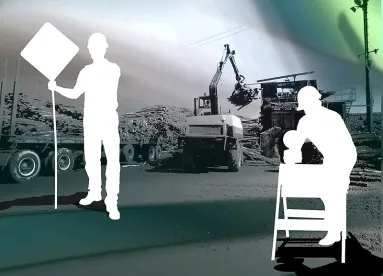On March 11, 2022, the Department of Labor (“DOL”) proposed reverting the definition of “prevailing wage” under the Davis-Bacon Act to a definition used over 40 years ago. According to the DOL, the proposal is meant to modernize the law and “reflect better the needs of workers in the construction industry and planned federal construction investments.”[1]
Brief History Lesson
The Davis-Bacon Act was enacted in 1931 and requires the payment of locally prevailing wages and fringe benefits on federal construction contracts. The law applies to workers on contracts in excess of $2,000 entered into by federal agencies and the District of Columbia for the construction, alteration, or repair of public buildings or public works.[2]
From the 1930s to the early 1980s, the DOL used the following three-step process to define prevailing wage:
-
Any wage rate paid to a majority of workers.
-
If there was no wage rate paid to a majority of workers, then the wage rate paid to the greatest number of workers, provided it was paid to at least 30 percent of workers (i.e., the “30 percent rule”).
-
If the 30 percent rule was not met, the weighted average rate.
In 1983, the DOL set the process of determining prevailing wage as:
-
Any wage rate paid to a majority of workers (i.e., more than 50 percent).
-
The weighted average rate.
This two-step process effectively removed the 30 percent rule from the equation. At the time, the DOL cited concerns that the 30 percent rule contributed to inflation.[3]
Returning to the Three-Step Process?
Now, the DOL has proposed returning to the three-step process in place prior to 1983.[4] The DOL proclaims this proposal “is necessary to ensure employers on federally funded or assisted construction projects pay fair wages to the workers who build our roads, bridges, federal buildings and energy infrastructure.”[5]
Additional proposed revisions include:
-
Creating several efficiencies in the prevailing wage update system and ensuring prevailing wage rates keep up with actual wages, which over time would mean higher wages for workers.
-
Periodically updating prevailing wage rates to address out-of-date wage determinations.
-
Providing broader authority to adopt state or local wage determinations when certain criteria is met.
-
Issuing supplemental rates for key job classifications when no survey data exists.
-
Updating the regulatory language to better reflect modern construction practices.
-
Strengthening worker protections and enforcement, including debarment and anti-retaliation.[6]
Still No Private Right of Action Under DOL’s Proposal
The DOL proposal includes language that the labor standards contract clauses and appropriate wage determinations are effective ‘‘by operation of law’’ in circumstances where they have been wrongly omitted from a covered contract. This proposed language would assure that, in all cases, “a mechanism exists to enforce Congress’s mandate that workers on covered contracts receive prevailing wages.”[7] However, the DOL stated that the proposal does not “risk creating an end-run around the administrative procedures” currently required. Instead, the operation-of-law provision “should not affect one way or another whether any implied private right of action exists under the statute.”[8]
60-Day Comment Period
The Wage and Hour Division of the DOL is currently soliciting comments, which may be submitted online. The comment period closes on May 17, 2022.
Prevailing Wage and Renewable Energy
The Build Back Better Act, which passed the House of Representatives in late 2021 and is currently stalled in the Senate, proposes expanded tax credits for green energy projects. Notably, it adopts a prevailing wage mandate like that of the Davis-Bacon Act. Renewable energy projects under the Build Back Better Act (if enacted into law) will likely involve work that is cutting edge and innovative. These types of projects are expected to make determining the proper, and perhaps new, classifications of work for prevailing wage rate even more complicated. Add in another layer of complexity with the DOL’s current proposals, and contractors would be not only at risk of exposure to wage underpayments, but also at risk of credit-eligibility challenges by the IRS.
Similar concerns are being raised in response to the recent introduction of the Clean Energy for America Act. This bill provides tax incentives for investments in clean electricity, clean transportation, energy efficiency, and the termination of certain provisions relating to oil, gas, and other fossil fuels.[9] To qualify for the tax credits for these projects, the bill requires contractors and subcontractors to pay prevailing wages at the local rate and utilize registered apprenticeship programs. Critics of the bill argue that prevailing wage regulations should not apply to clean energy tax credit projects. Removing prevailing wage requirements on these types of projects would allow qualified contractors and their skilled workforces to compete to build the clean energy economy and would provide taxpayers additional value for investments in clean energy and public works projects.
While both the Build Back Better and the Clean Energy for America Acts have yet to become law, both pieces of proposed legislation stand to create additional complexities in prevailing wage determinations and compliance.
Other Recent Proposed Reforms to Davis-Bacon
Representative Abby Finkenauer of Iowa introduced the Stop Swaps, Protect Local Jobs Act in June 2020.[10] The Stop Swaps, Protect Local Jobs Act would prevent local workers from having their wages undercut by fund swapping, a practice in which city and county governments move federal dollars out of a roadway project in exchange for state funds. By swapping these dollars, projects using only local and state funding do not have to comply with the Davis-Bacon Act requirement that workers are paid no less than the local prevailing wage. The bill died in committee. However, Representative Cindy Axne, also of Iowa, re-introduced the bill in May 2021.[11] It is currently under review by the House Committee on Transportation and Infrastructure.
The Davis-Bacon Repeal Act was introduced to the House in March 2021 by Senator Mike Lee of Utah.[12] The bill lives up to its name and seeks to (1) repeal the Davis-Bacon Act and (2) void “references in any law to a requirement under the Davis-Bacon Act.” The bill has been referred to the Committee on Health, Education, Labor, and Pensions.
Takeaways
Between the proposed changes to the definition of the prevailing wage under Davis-Bacon, the large amount of conditional cash-flow stemming from federal infrastructure and proposed renewable energy legislation[13], and the DOL’s recent announcement that it will be hiring at least 100 new wage and hour investigators[14], chances are employers will see an increase in costs on federally funded projects as well as increased DOL enforcement efforts.
We will continue to monitor developments in this area and provide updates.
[1] https://www.dol.gov/newsroom/releases/whd/whd20220311
[2] https://www.dol.gov/agencies/whd/laws-and-regulations/laws/dbra
[3] https://www.govinfo.gov/content/pkg/FR-2022-03-18/pdf/2022-05346.pdf
[4] It is worth noting that California’s prevailing wage requirements already implements a three-step process similar to the process the DOL is now proposing.
[5] https://www.dol.gov/newsroom/releases/whd/whd20220311
[6] https://www.dol.gov/newsroom/releases/whd/whd20220311
[7] https://www.govinfo.gov/content/pkg/FR-2022-03-18/pdf/2022-05346.pdf
[8] https://www.govinfo.gov/content/pkg/FR-2022-03-18/pdf/2022-05346.pdf
[10] https://www.congress.gov/bill/116th-congress/house-bill/7097?r=6&s=1
[11] https://www.congress.gov/bill/117th-congress/house-bill/3559
[12] https://www.congress.gov/bill/117th-congress/senate-bill/805/text
[13] https://www.congress.gov/bill/117th-congress/house-bill/3684/text
[14] https://www.dol.gov/newsroom/releases/whd/whd20220201-2




 />i
/>i
